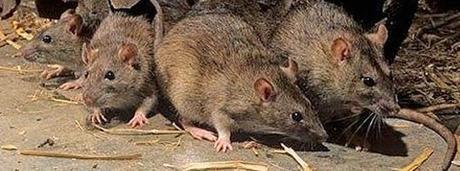Knowing just how dangerous a rat infestation can be, it becomes obvious why it is important to address it as soon as it is discovered. However, there are some cases when the owner of the property just couldn't afford to simply wait until their existence becomes obvious. In most cases, property owners need to be pro-active and really look for these rodents in areas where they usually make their nests and shelters. This way, there is a high chance for the owner of the property to stop their nesting immediately after they move-in into the property. The most common places where they nest are:
1. Rats like dark places where there is less or no human activities. Examples of these areas are the ceilings, roof void, in between walls and under floor tiles.
2. For some reasons, rats which commonly infest homes and other properties like to be cupboards and pantries. Perhaps they like the fact that there are so many items in these areas which can be nibbled and chewed every now and then.
3. These rodents also like to be near water heaters. In places where the temperature of the surrounding can drop to freezing points, it becomes imperative for rats to find a nest wherein they can stay and nurture their litters.
4. Almost every time, it can be expected that rats have been nesting behind large boxes, furniture and even working utility machines. If these items cannot be removed, the best way to keep rats from them is to move or shake them on a regular basis. This way, the rats will get the signal that the place is not actually free from human activities.
5. Rats also like to build nests or forage in heaps of garbage and other forms of rubbish materials. They would do the same to pile of wood or vegetation which has gone too thick.
To Read About Rat Exterminator Follow This Link

How to Stop the Rats?
Rats, by nature, are nocturnal animals. They are most active at night and probably, the reason behind this is because they want to have as little human interaction as possible. This primal need to be away from humans (which is oxymoronic knowing that they actually depend on humans for food) is what pushes other rats to become diurnal (active by day) in areas wherein most of the activities happen at night, i.e. bars, clubs, theatres, etc. Thus, it can be said that rats are really very adaptable animals and they do so in order to survive in an environment that varies from time to time.
To spot rats despite their ever changing adaptions, it is good if we know the signs that imply that they are in fact present in an area. Some of these signs are:
a. droppings near walls, corners and around a nibbled food item (rat droppings measures about 12-18 mm and are usually black, grain-like and moist)
b. debris of gnawed items (could be paper, carton, fabric, shells, bones, etc.)
d. tracks of tiny rat paws scattered all over the area (well, most rats have their underside rubbed to the floor as they scurry here and there, in this case, what can be seem are not tracks but greasy "rub marks")
e. items with gnawed holes
To Read About Rat Control Follow This Link
How to Protect Yourself From Rats?
Now, it is imperative that you protect yourself and your family from the harms that rat infestation can bring. Apart from eradicating them, you also need to do the following while your entire place is totally clear:
1. You need to keep all you food items in impenetrable containers, that is, use plastic or glass containers which rats cannot chew.
2. Do not recycle foodstuff which have been contaminated by rats, throw these items right away.
3. It is also possible that the utensils and cookware that you have at home might have been "touched" by rats, so it is good if you can find a way to sanitize them and keep them in storage where rats will never get the chance to find them.
To Read More About Rat Infestation Follow This Link
